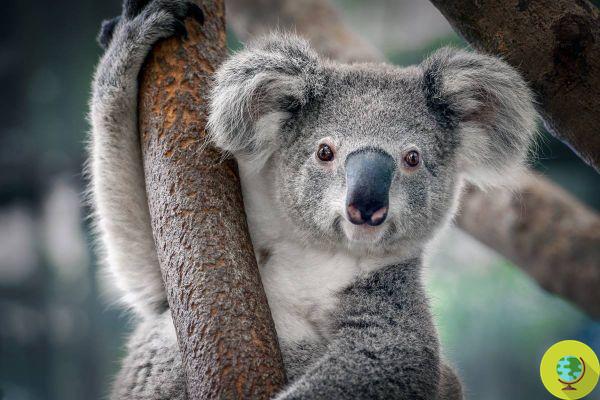
Chlamydia is spreading faster and faster among koalas, rendering them blind and sterile, and even leading to their death
Chlamydia is spreading faster and faster among koalas, rendering them blind and sterile, and even leading to their death. And if the experimental vaccine does not prove effective, an unprecedented massacre is risked
There is no peace for the koala. Where the terrifying fires that hit their habitat between 2019 and 2020 now face another major threat: chlamydia, a sexually transmitted disease that - according to experts - could lead to extinction in much of Australia.
The disease has already spread like wildfire, affecting over 80% of the population living in a rural area in the east of the country, alerting scholars who already speak of possible "localized extinctions".
Read also: Koalas will go extinct before 2050, the alarm of Australian scientists
Chlamydia, the "silent disease" that threatens the survival of koalas
But what exactly is it about? Chlamydia is a sexually transmitted infection caused by the bacterium Chlamydia Trachomatis. It affects around 100 million people each year and can lead to infertility if not treated properly. In koalas, on the other hand, it causes blindness and very painful cysts in the reproductive system, which can cause sterility or even cause death.
Chlamydia is usually treated with antibiotics, but the problem is that these can destroy the delicate intestinal flora of koalas and very often these marsupials die as a result of the treatment.
Up to 13 years ago, koalas were reported to have significantly fewer cases of chlamydia - about 10% of the koala population living in Gunnedah, a rural town in New South Wales, suffered from it. incidence of cases had risen to 2015%, while now it has reached 85%.
To avoid a real koala slaughter, scientists are now experimenting with vaccines to protect them from calmidia.
"If the vaccination strategy doesn't work, we run a very high risk of localized extinctions," said Mark Krockenberger, professor of veterinary pathology at the University of Sydney.
The role of climate change in the spread of the disease
The Australian territory has become increasingly vulnerable due to a mix of factors: forest fires, drought and record heat waves, consequences of the climate crisis. All of this makes koalas and other iconic Australian species more susceptible to disease.
In fact, according to the Commonwealth Scientific and Industrial Research Organization (CSIRO), when marsupials are subjected to unusually stressful environmental conditions - including heat, drought, habitat loss and fragmentation - chlamydia spreads more rapidly.
Australia has lost around 30% of its koalas in the past three years alone. The IUCN - which has included these marsupials among the species at risk of extinction throughout Australia, would remain 100.000 specimens, but according to the Australian Koala Foundation those surviving would be much less: about 58.000
Follow us on Telegram | Instagram | Facebook | TikTok | Youtube
Fonte: CNN/Australian Koala Foundation
On koalas read also:
- After the Australian fires, the recovered Koalas go “home” to their eucalyptus trees
- So Australia wants to create the disease-resistant "super koala" ...
- Koalas will go extinct before 2050, the alarm of Australian scientists
- In Australia they are about to destroy 52 hectares of koala habitat to enlarge a quarry


























